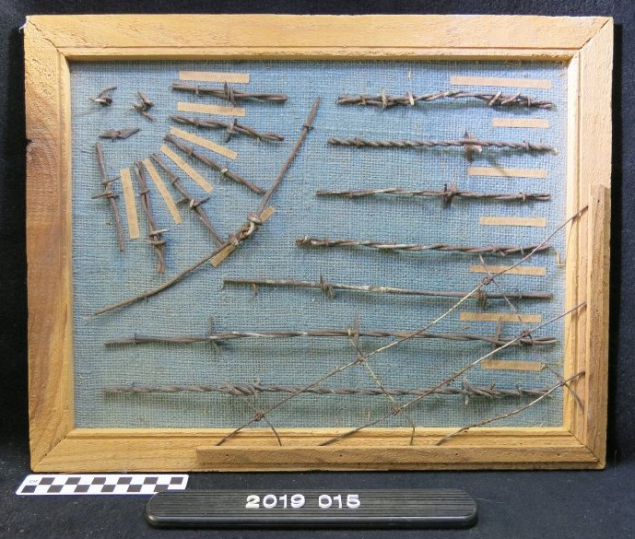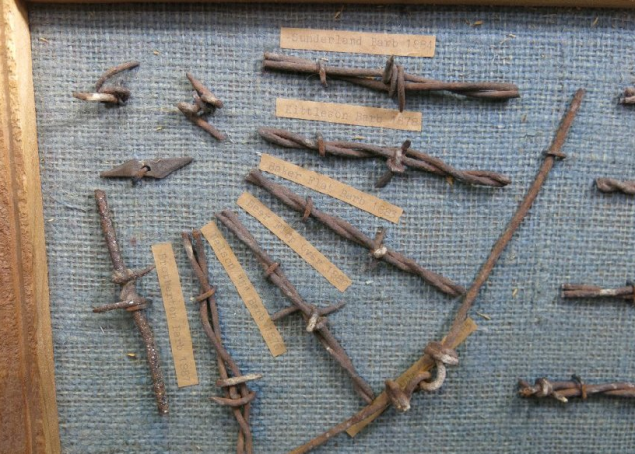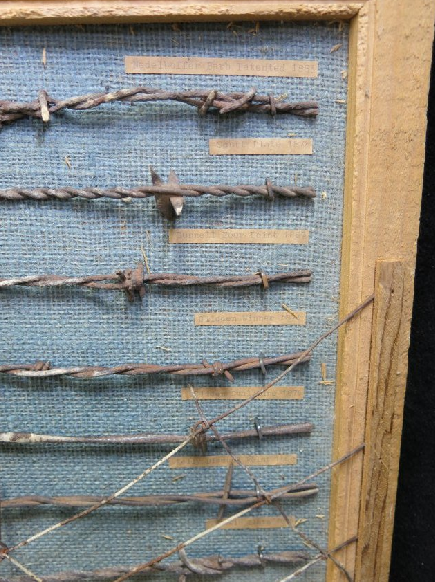


At the top of the list of good, somewhat tongue-in-cheek, An Old Farmer’s Advice, notes fences that work for many animals and come in many forms. This week’s What’s New Wednesday celebrates the barbed wire in a collection of various styles representing many, many different patterns and uses./p>
The development of barbed wire ended the open range and cattle drives but allowed for crop production by keeping the free ranging cattle out of fields. Barbed wire was patented by their inventors which gave each one their individual names, either by the same or name of the inventor. The fencing could be single or twisted double strands depending on the need, and the barbs could be wire wrapped around, or in between the strands. Plates also developed based on the livestock need.
In the artifact, each of the complete strands are labeled. In the sunburst like arch, the examples shown are the Sunderland Barb (1884), Kittleson Barb (1878), Baker Flat Barb (1883), Beer Flop Over (1880), Nelson "H" Barb (1876), Brotherton Barb (1887), and Barlow Planter Wire (1885). The longer stripes represent the Nadelhoffer Barb Patented (1883), Scutt Plate (1878), Burnell Four Point (1887), Glidden Winner (1874), Glidden Oval Line (1876), Kelly Diamond Point (1868), and Watkin Plate (1876). The years behind each name denote the year of patent.
While the gun may have won the west, barbed wire certainly tamed it by being high, tight and strong.

